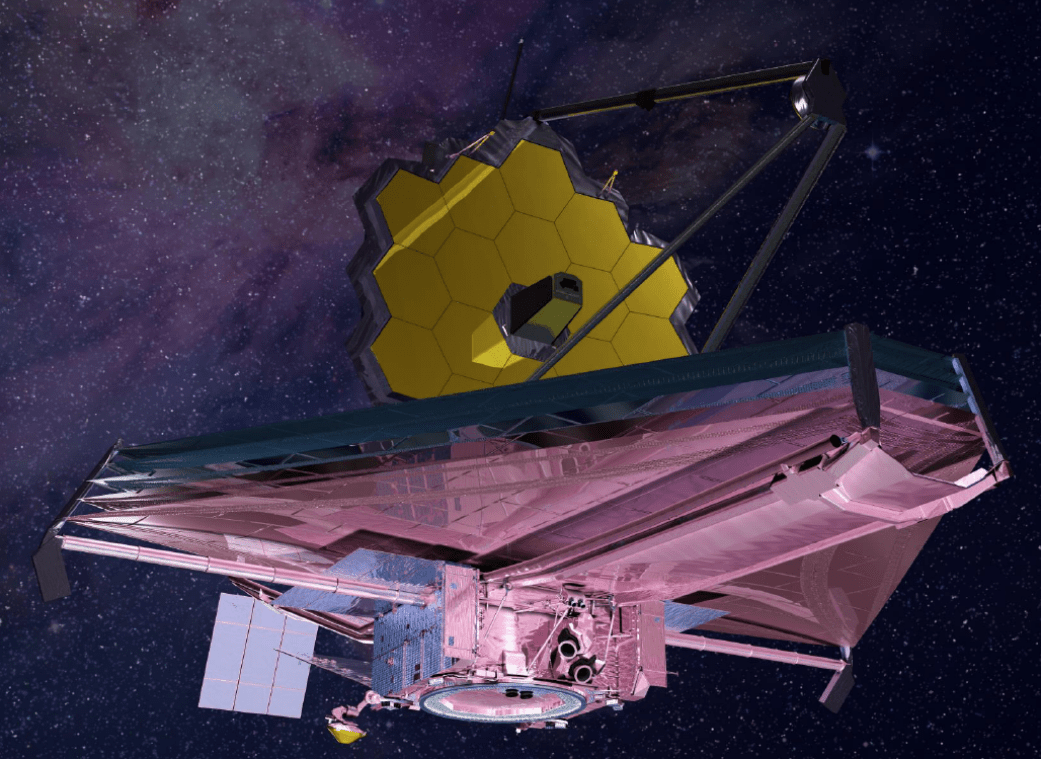UPDATE: Shortly after publication of this article, Arianespace announced the launch for JWST has been delayed until December 25:
“Due to adverse weather conditions at Europe’s Spaceport in French Guiana, the flight #VA256 to launch the James Webb Space Telescope –initially scheduled for December 24– is being postponed,” Arianespace said via Twitter. “Tomorrow evening, local time, another weather forecast will be issued in order to confirm the date of December 25. The #Ariane5 launch vehicle and Webb are in stable and safe conditions in the Final Assembly Building.”
Earlier today, NASA and ESA announced that the James Webb Space Telescope has cleared one of the final hurdles before launch. The telescope passed the final launch readiness review, meaning that all the hardware and software for the spacecraft and the Ariane 5 rocket are ready for flight. This officially greenlights the liftoff.
Additionally, NASA said the Webb teams recently completed a comprehensive day of launch rehearsal. This involved the launch site crews in French Guiana, and Webb’s Mission Operations Center (MOC) at the Space Telescope and Science Institute in Baltimore, Maryland.
“The various teams involved with launching Webb are all standing at the ready, and have practiced each step routinely,” NASA said.
As we originally reported in this article, the launch on the 24th is not a given. The tropical launch site means weather is a factor. A current forecast for high altitude winds could force a delay. As is the case with all launches, any weather delay might be a last-minute decision.
Rollout to the launchpad is currently scheduled for December 22.

As of now, the Webb telescope is all tucked into the rocket fairing and securely attached atop the Ariane 5. ESA said putting the fairing around the telescope was a delicate operation, assisted by a laser guiding system, because the margins between the folded-up observatory (4.5 m wide) and the rocket fairing (5.4 m wide) are small.
Now, for its last days on Earth kept at specialized environmental conditions inside the fairing that keep the observatory in a perfectly controlled temperature and humidity ranges.
Besides the weather, the telescope must clear one final health before launch. Once the rocket is on the launchpad, technicians will conduct final electrical and software configurations, ensuring everything is a go. Then, just 20 minutes before liftoff is when the telescope will be switched to internal battery power. If the battery systems are working, at roughly 15 minutes prior to launch, the mission will be fully cleared for flight.
Here’s an animation of what the launch will be like:
For everyone who has been anticipating this mission and its launch, clearing the final launch readiness review is a huge relief. The often delayed, much anticipated mission will reveal insights about all phases of cosmic history, looking back to the universe’s first stars and galaxies, searching for signs of potential habitability among the thousands of exoplanets that have been discovered in recent years, as well as zooming in on objects in our own Solar System.
Lead image caption: Illustration of NASA’s James Webb Space Telescope. Credits: NASA

